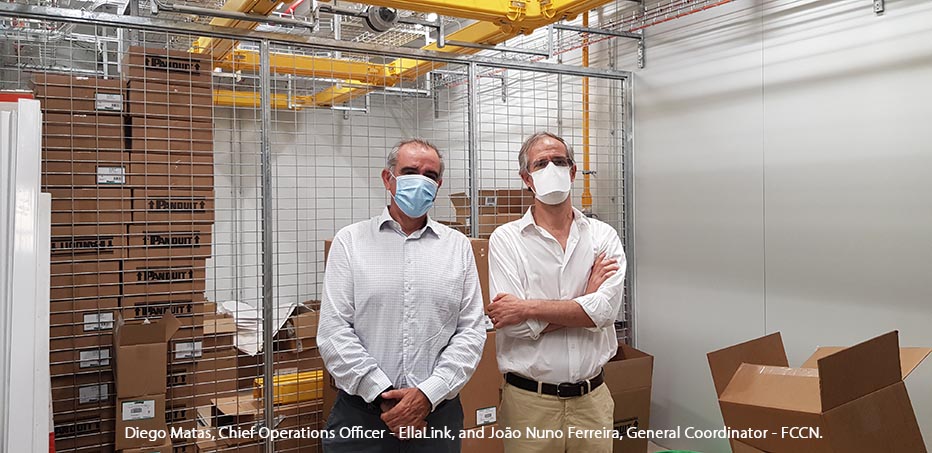João Nuno Ferreira - General Coordinator of the Portuguese NREN, the FCCN Unit of FCT - Foundation for Science and Technology - visited the Sines station, designed to accommodate the EllaLink submarine cable, and revealed some details about this structure.
(By: Ana Afonso, FCCN, Portugal) The BELLA project (Building the Europe Link with Latin America) will link European and Latin American research communities through the installation of a state-of-the-art submarine cable, directly between the two regions. The European entry point will be in the Portuguese city of Sines, where the European mainland landing station for the EllaLink cable system is now in construction.
As the Portuguese National Research and Education Network (NREN), FCCN is part of the Consortium that leads this project, together with Regional Research and Education Networks GÉANT (Europe) and RedCLARA (Latin America), and other NREN counterparts in Brazil, Chile, Colombia, Ecuador, France, Germany, Italy and Spain.
João Nuno Ferreira visited the strategically positioned construction site and shared his impressions of the visit.
Could you please share your first impressions of the visit to Sines?
From my perspective I really enjoyed the visit. Diego Matas (Chief Operations Officer - EllaLink) was an excellent and kind host. He guided me through the building and I could see how well the work is progressing and how the station building is almost finished.
At what stage is the project at the site?
Right now, they are mainly installing the support equipment. The cable landing station is the first tenant in a new allotment of the Sines Industrial and Logistics Zone, so EllaLink has room to expand and other industrial tenants should be able to get allotments nearby if they wish.
Can you give more detail on the construction of the bore pipes connecting the beach to the location where the cable is brought out to rest on the seabed?
A special "horizontal directional drilling" (HDD) machine will be used to carry out the construction operation. The drilling and the bore pipe installation will start at the beach manhole on shore 300 metres from the coast, on a small plateau, and will end on the seabed about 300 metres from the coastline. It will run all the way at various meters under the surface
Does this drill start at the Landing Station site?
The bore pipe doesn't start at the landing since it is almost 2 km inland. Instead a cable trench has been built between the landing station and the beach manhole.
Can you tell us about any steps that have been taken to safeguard the marine protected area, next to the station?
The coordinators of the project stressed how the Portuguese authorities have been very demanding regarding a range of issues related to environmental protection, both on land and at sea. Especially because the Industrial and Logistics Zone of Sines borders environmentally protected areas. The environmental protection authority was present at the site to monitor the targeted drilling work. On the other hand, at the station itself, several measures are visible that have been taken to prevent and manage any potential fuel spills.
In your opinion, what are the main advantages of opting for HDD pipes?
The directed drilling technique is the best submarine cable landing solution because it reduces the impact in the area near the shore and increase considerably the robustness of the infrastructure. Since Sines has been a harbour for several centuries, the cable laying process must avoid any historic shipwrecks as these are considered of archaeological value, therefore the national archaeological authority was also involved.





